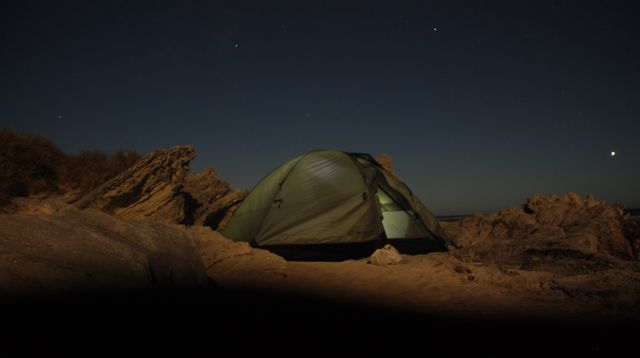Rottnest is an island offshore from Perth in Western Australia. It is about 10kms long and at its widest about 4kms wide. The island has never been a place of Aboriginal inhabitation. It was wooded to the north and east before white people arrived. Some of the more windswept parts were originally heath however. Quokkas (Setonix brachyurus), a nocturnal macropod that hops slowly about the place, nibbled meekly on pigface and drank brackish water. The sound of the sea winds blowing across the canopies of melaleucas, acacias and native pines was heard by these little beings for thousands of years. King skinks waddled over the crests of brilliantly white sand dunes to look down on the acquamarine waters, just as we do today, for countless centuries.
In the nineteenth century the island took on a darker face: it became a prison for original Australians. Often the incarcerated men had comitted no offense at all. Under their own law in their own land they had the right to kill large mammals that were wandering about in their hunting grounds. Under their own law they were often obliged to spear a man in the leg who had comitted an offense of some kind. And yet the white usurpers did not recognize the thousand-year old laws of Australia. Those who followed their laws as they always had they renamed ‘criminals’. Many of the original Australians – from the deserts of the north or the forests of the south – died on the island from illnesses such as pneumonia.
In the twentieth century the island became a holiday retreat for white people from Perth. The land had deteriorated and by the 1930s native plants were being raised in nurseries and planted out across some parts of the island. This reafforestation continues to this day in 2009. You can help to plant trees on the island by joining a group with the Rottnest Society that heads out each winter.
These days quokkas are not shot at by ‘sporting’ white men. They don’t have their skins made into rugs as sometimes happened in earlier times. Now they are an endangered species of life on earth, like so many other furry Australians. They are very hard to find on the mainland, where the bulk of their kin used to live.
In the water people still kill plenty of wildlife out on Rottnest. The over-fishing has been going on for a while. Personal accounts of long-term skin divers have suggested that what used to be an underwater fairy land in the 1950s had become comparitvely barren and empty by the 1980s (Rottnest Island: A Documentary History, Prue Joske, et. al., UWA Press, 1995). Indeed the population of Perth really only becomes substantial after the 1950s, so this trend would make sense in terms of the increasing pressures of fishing on the waters around the island.
I helped out during a recent campaign of the Wilderness Society to get the amount of the waters around Rottnest turned into areas protected from fishing. In doing so I talked to many members of the public about the issue. Divers who had been diving on Rottnest from the 1970s till today told me that they had, over the years, watched a huge drop in the numbers of large fish around the island. In July 2007 the amount of protected marine areas on Rottnest went from 3% to around 15%. Conservation biologists told us that we need to put at least 30% in protected areas, but the government didn’t follow their guide and the waters of Rottnest are still underprotected from Perth’s weekend fishermen.
Some people still camp on the beach around Rottnest, even though they’re not supposed to. In doing so they are keeping up an old tradition of their white forefathers and mothers, who camped on Bather’s Beach in Fremantle for many weeks when they first arrived in Australia in 1829. One praiseworthy development on the island is that, unlike their mosiquitoe-harrassed ancestors, contemporary littoral itinerants on Rottnest boast tight-fitting mosquito flys in their tents.
Some things at least get better with time.
